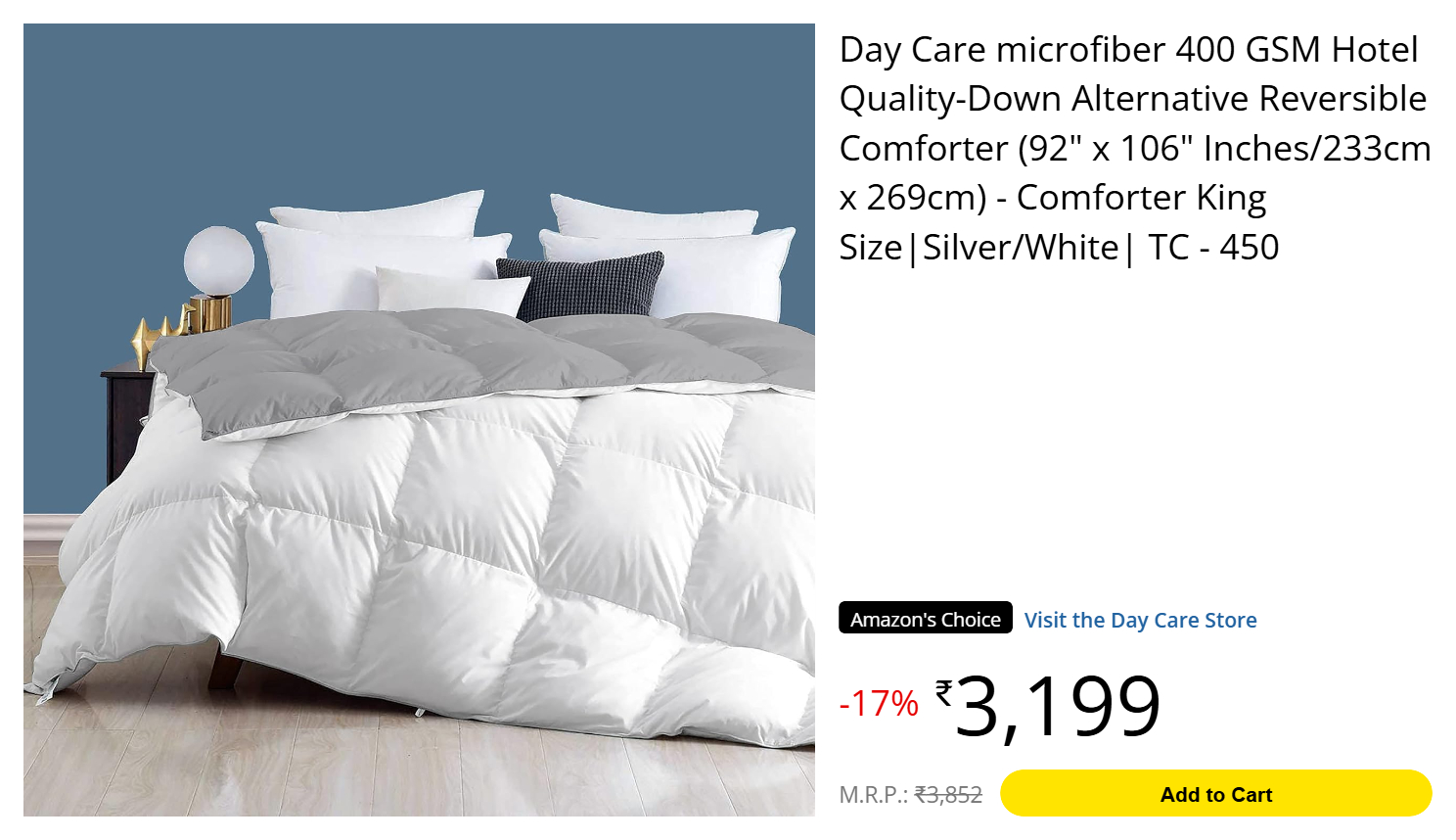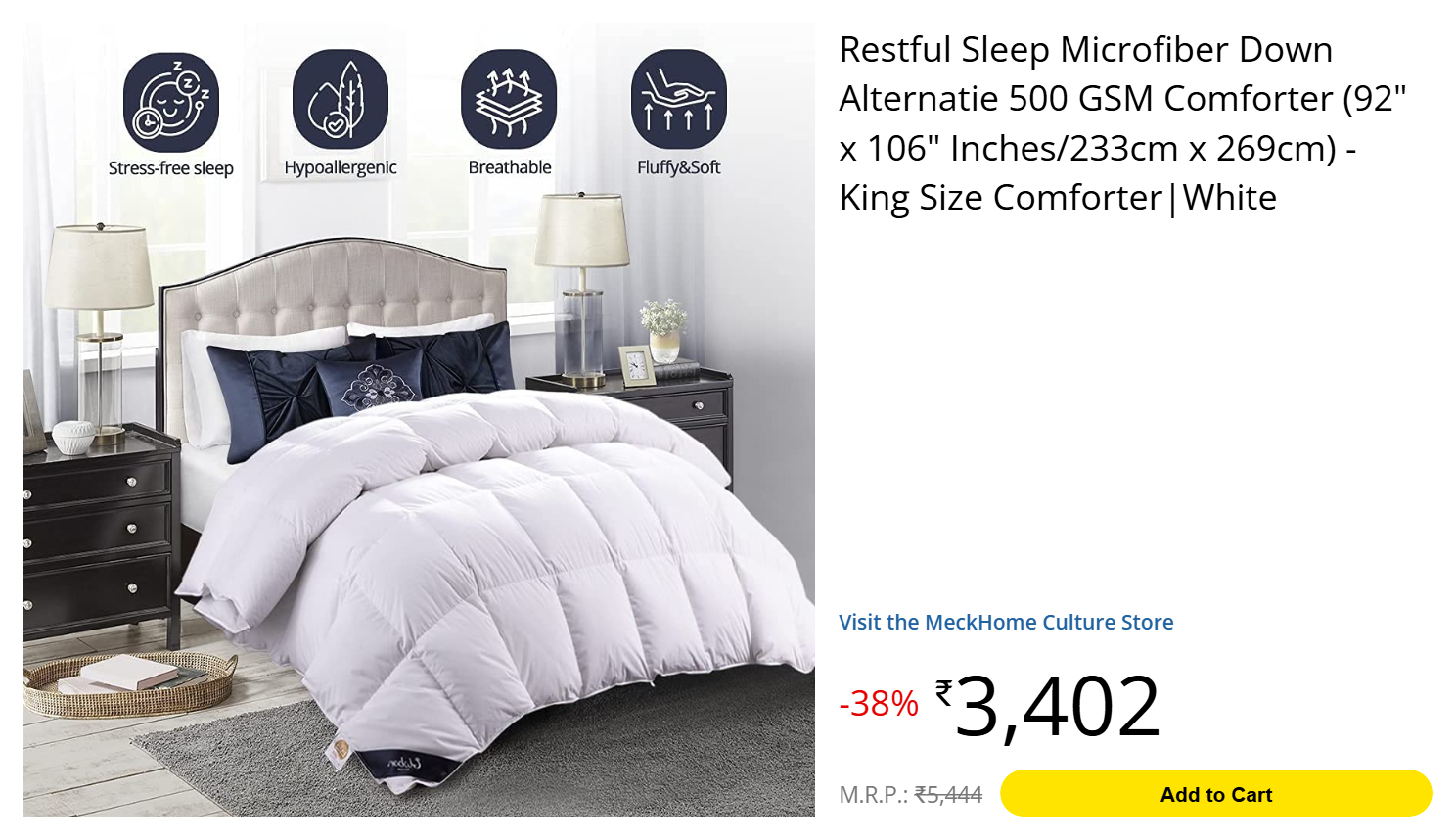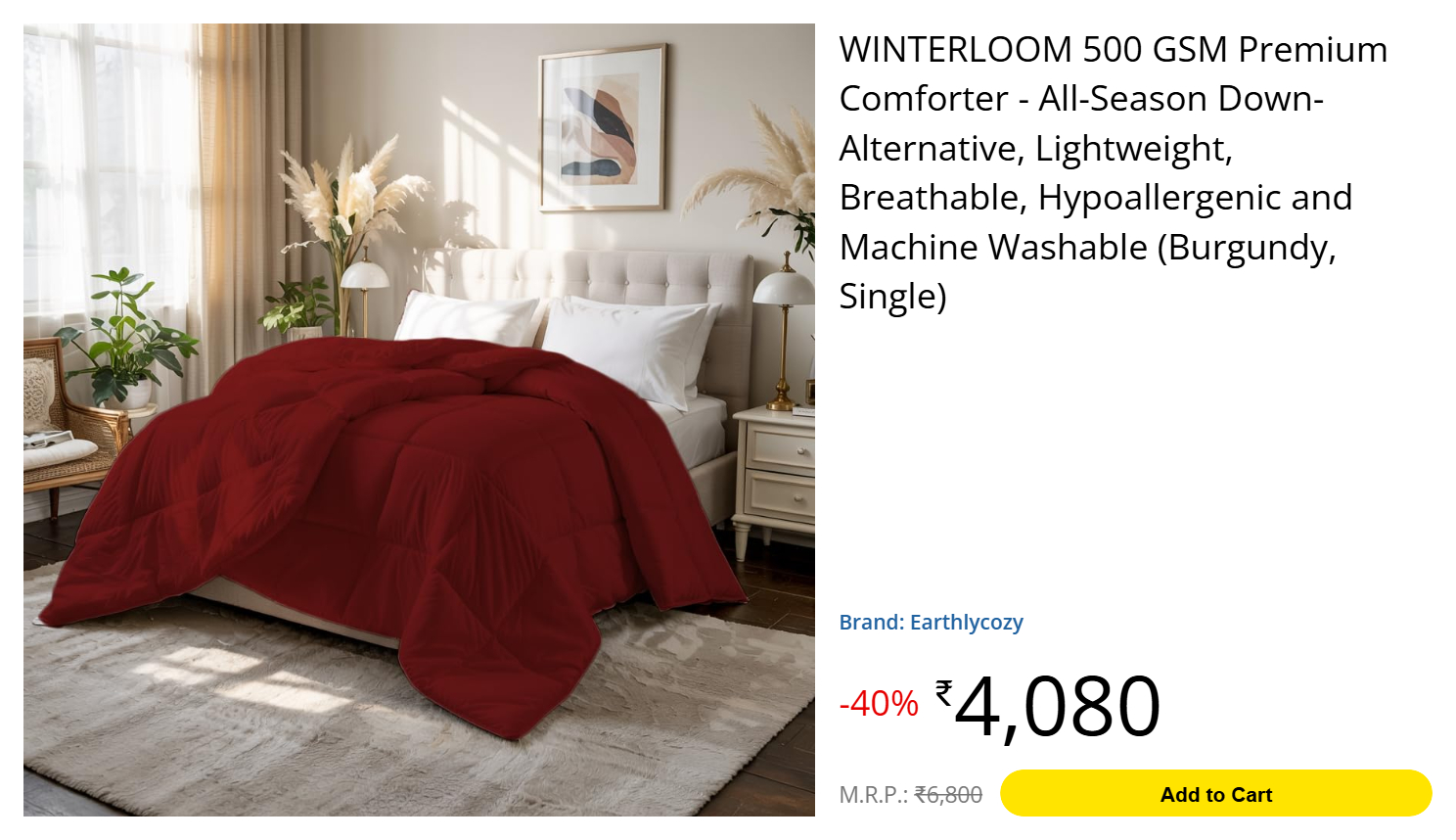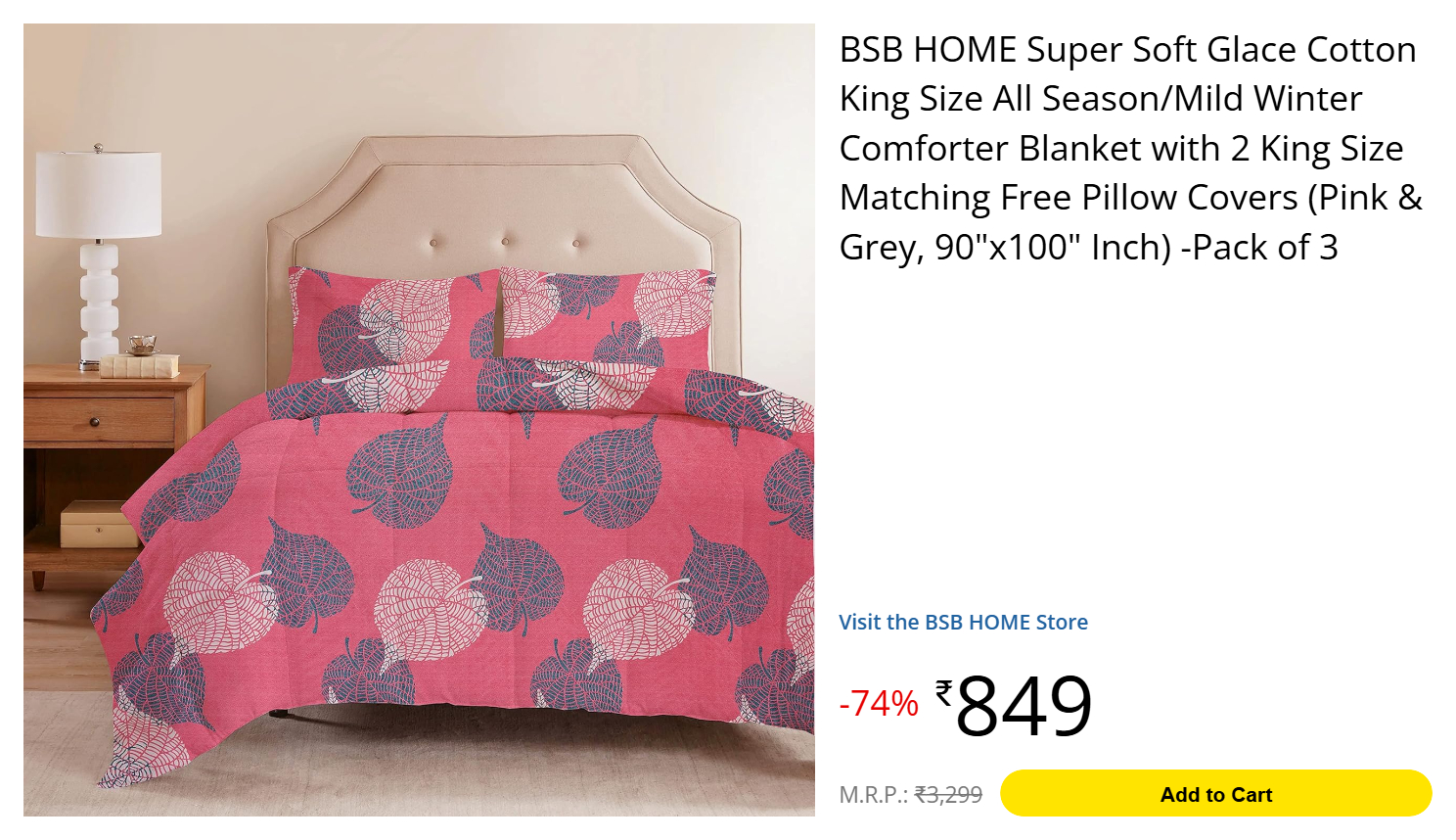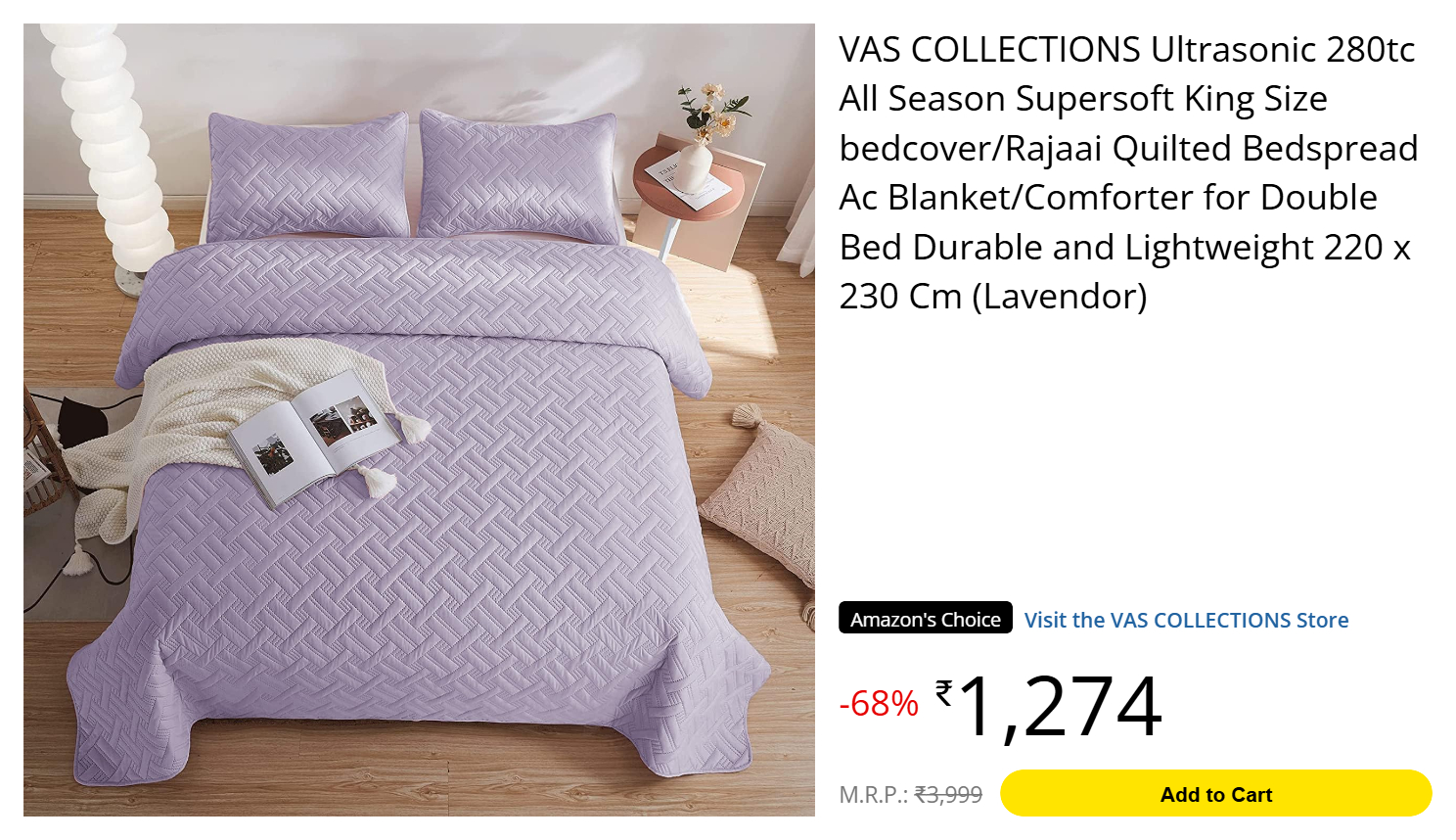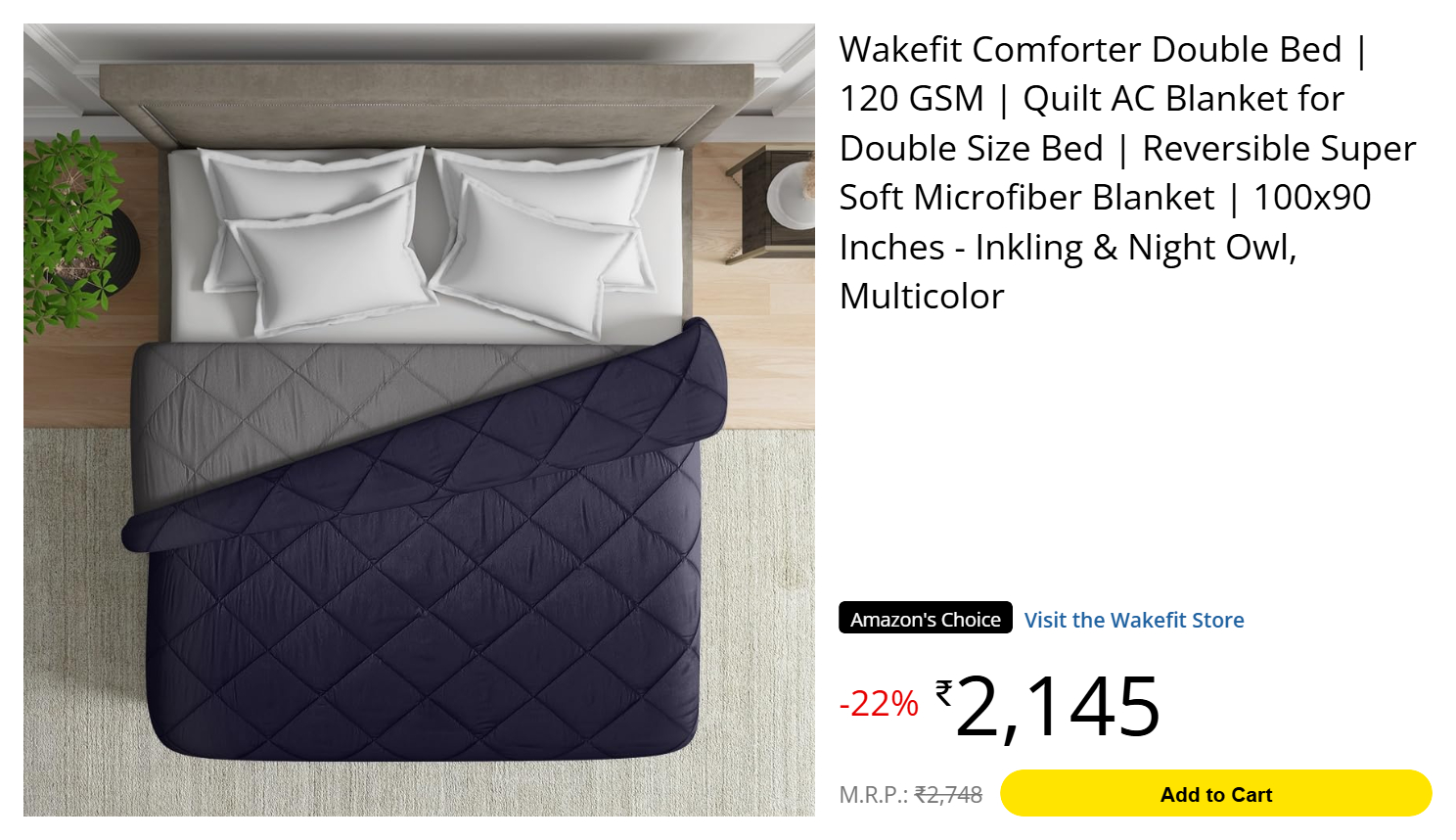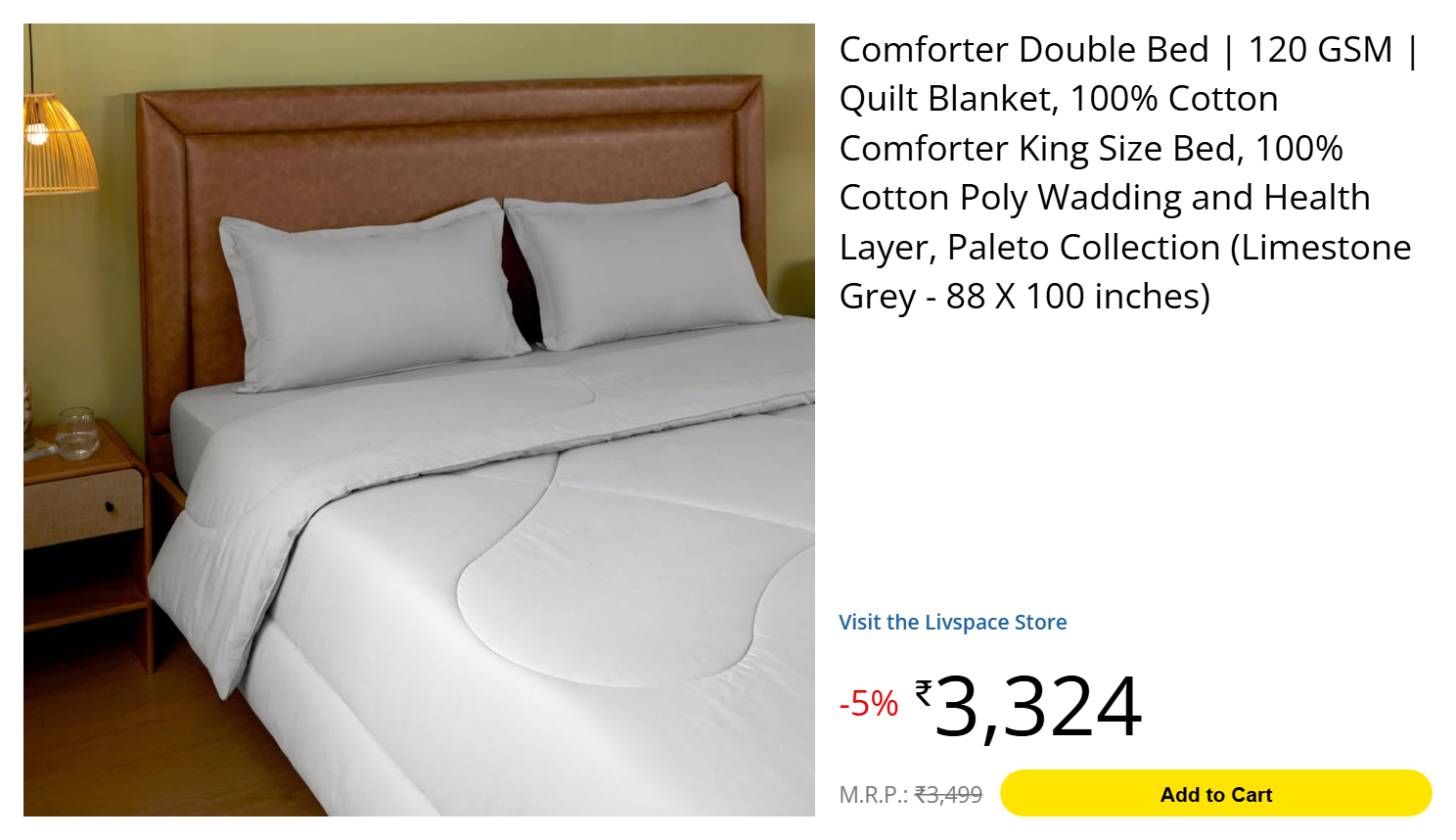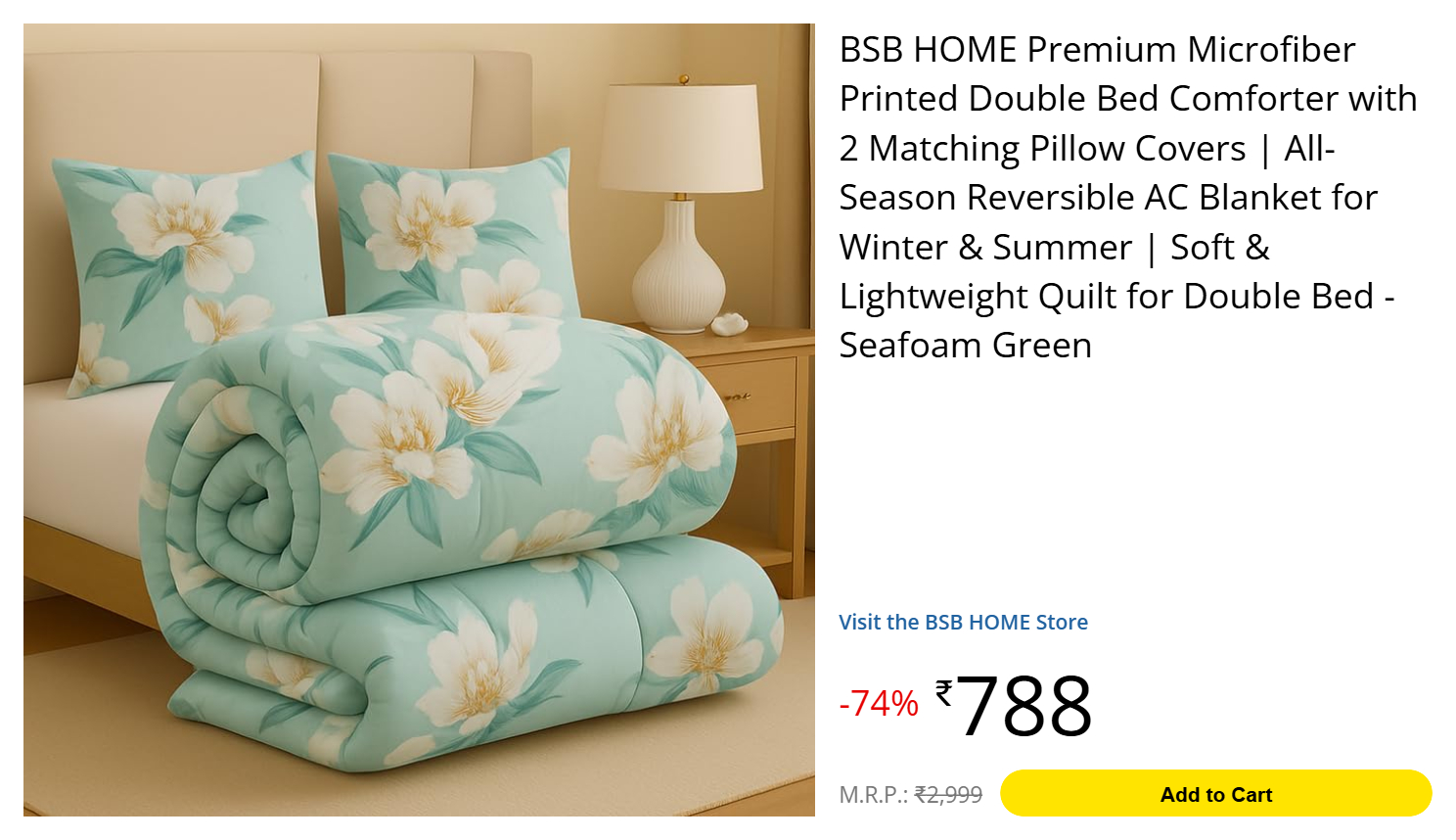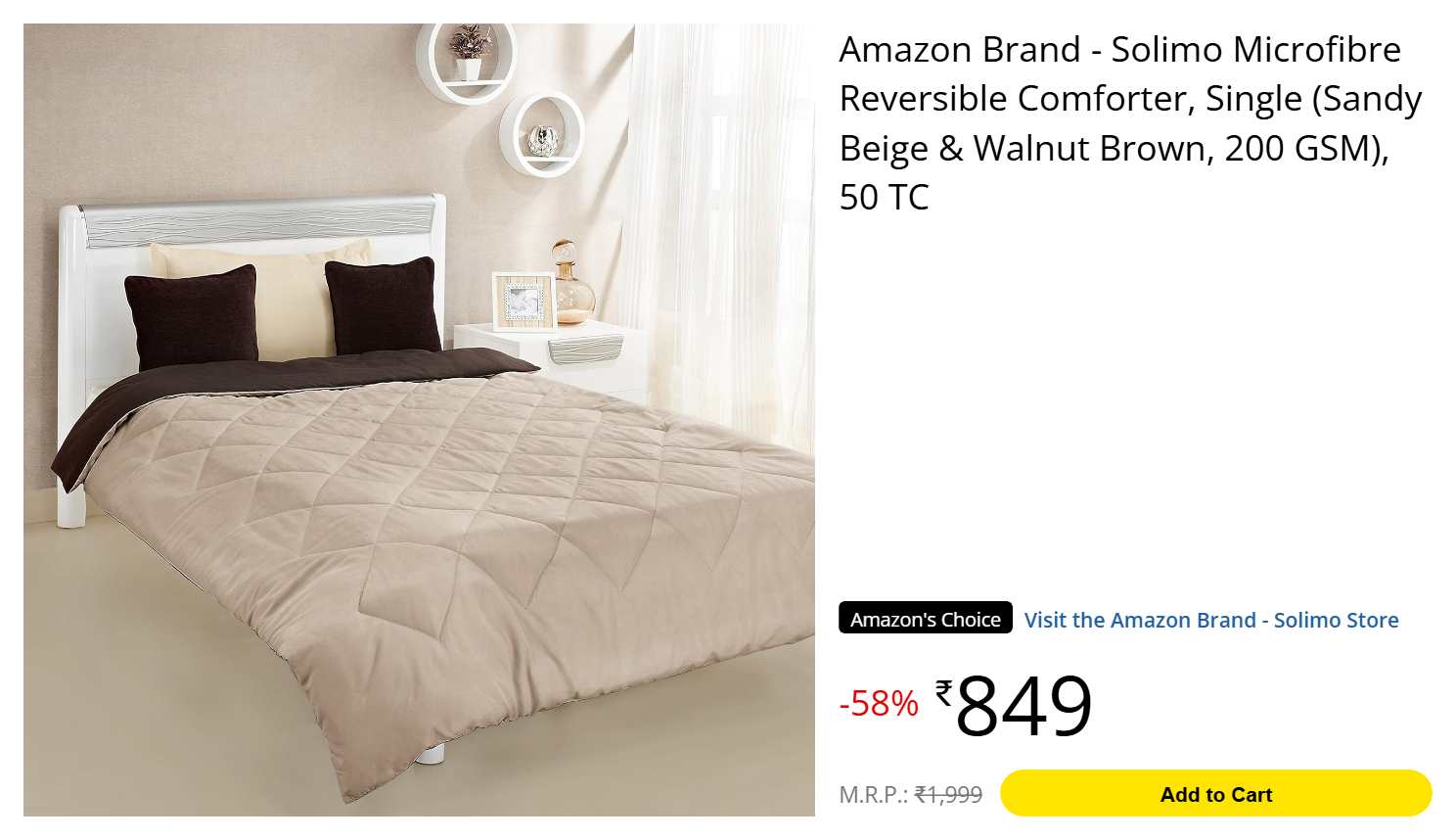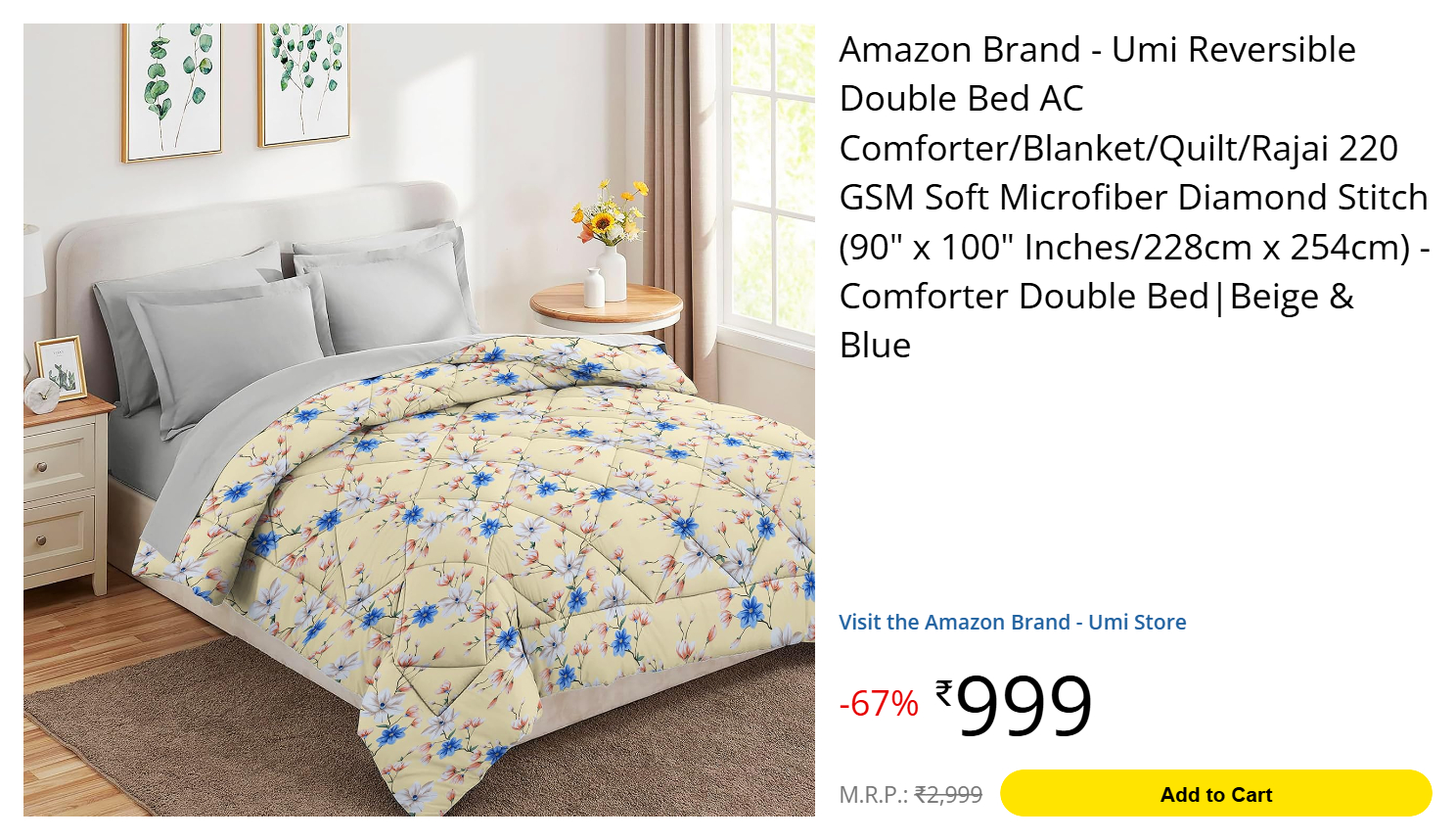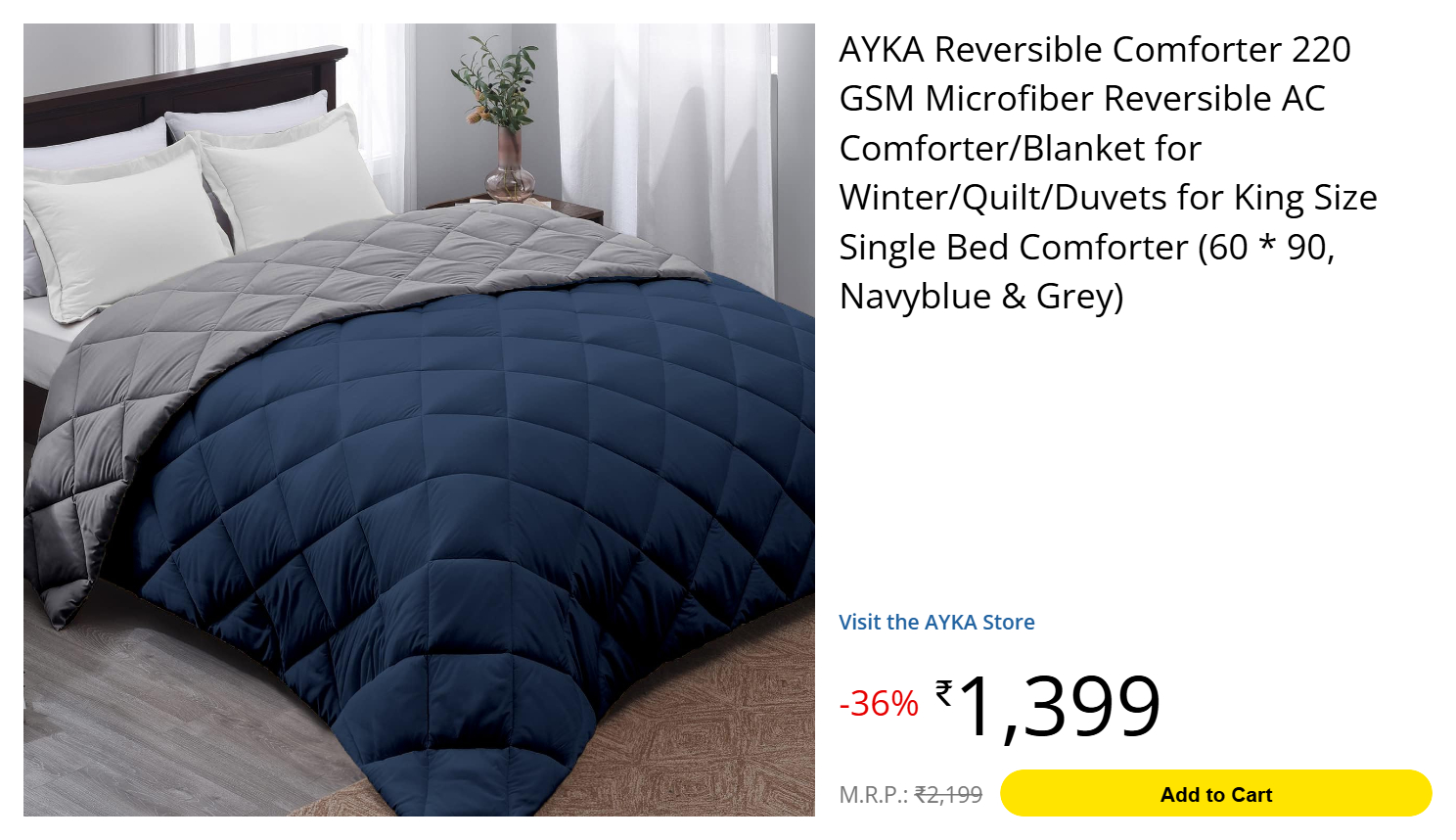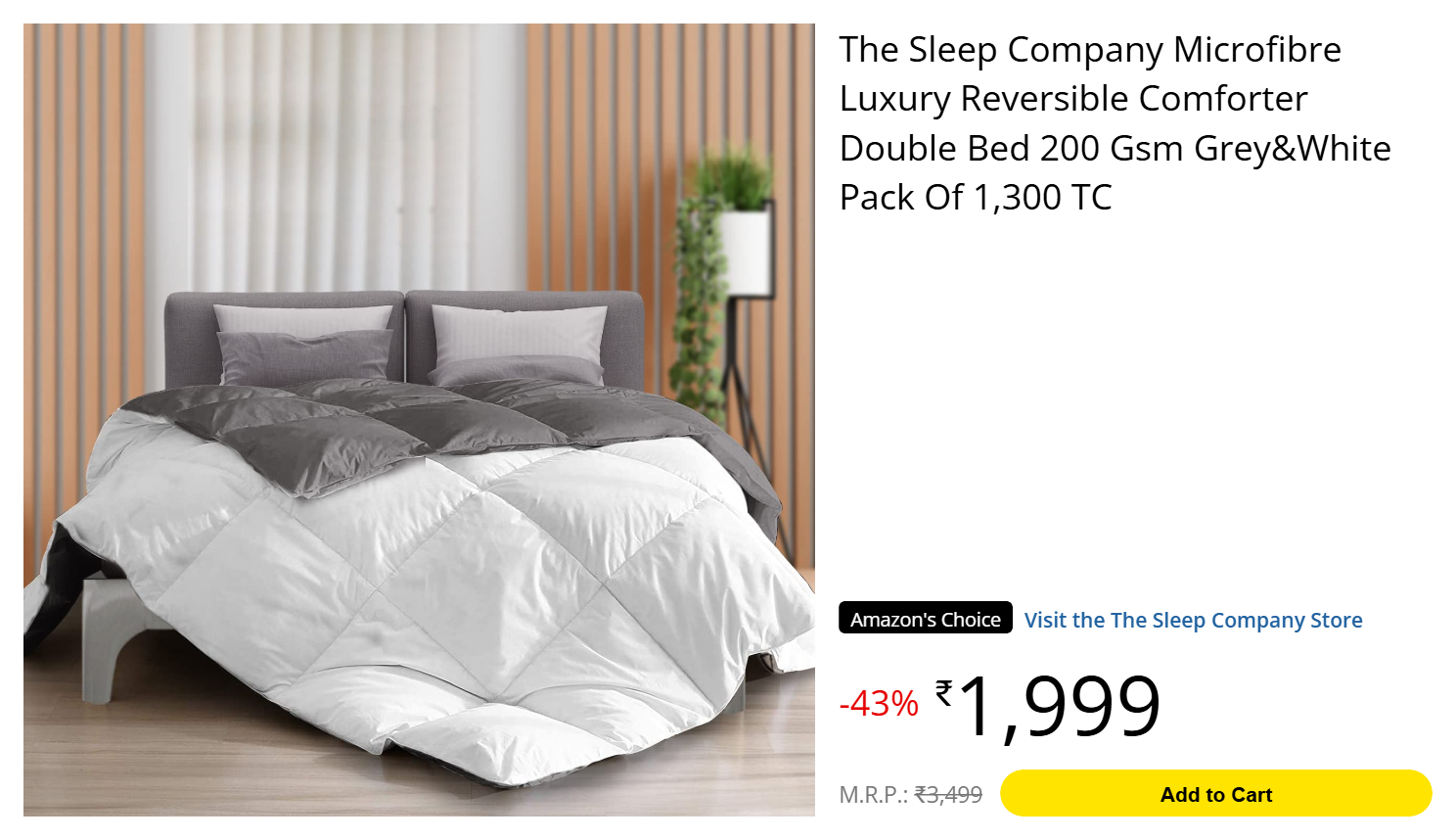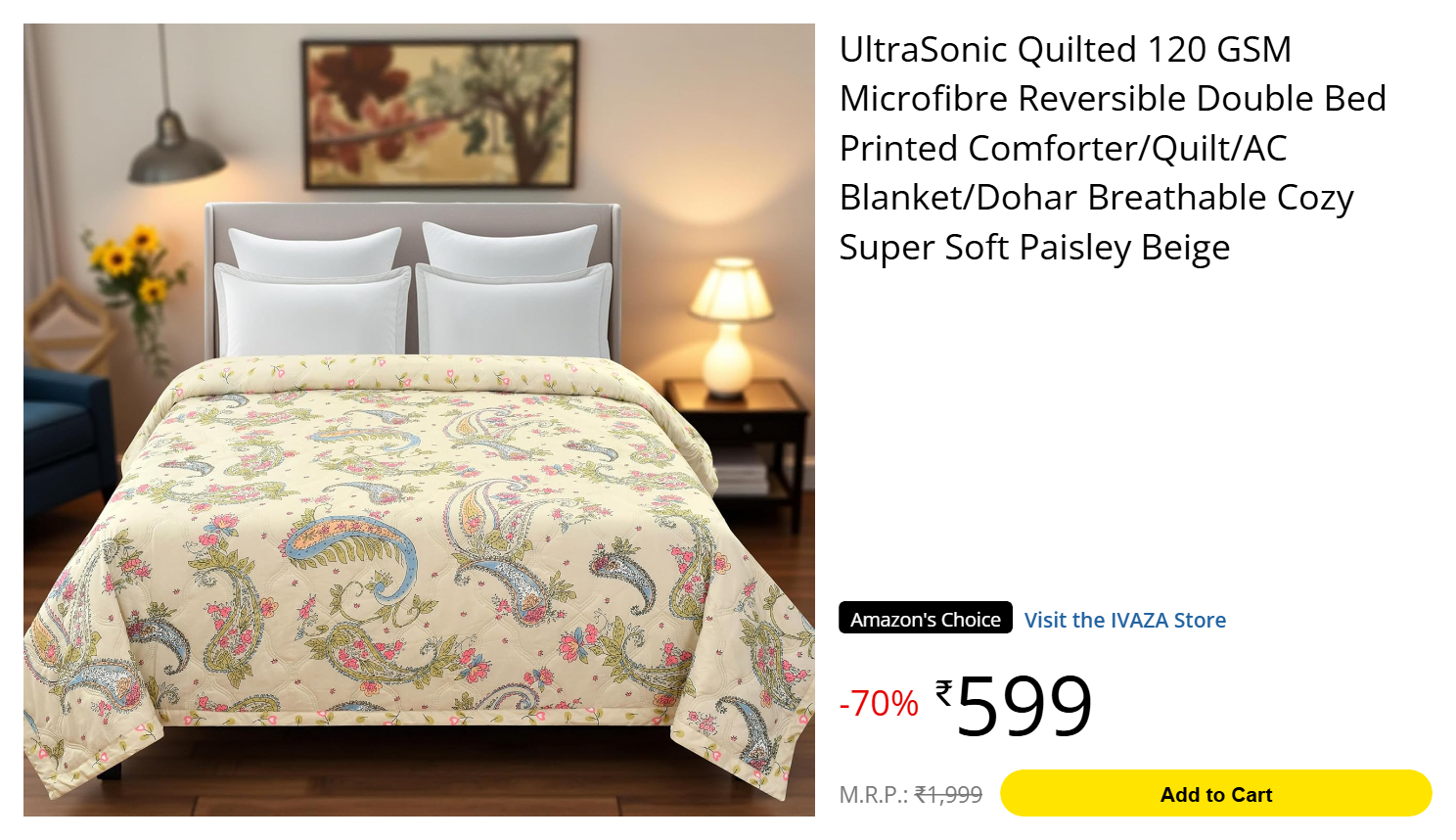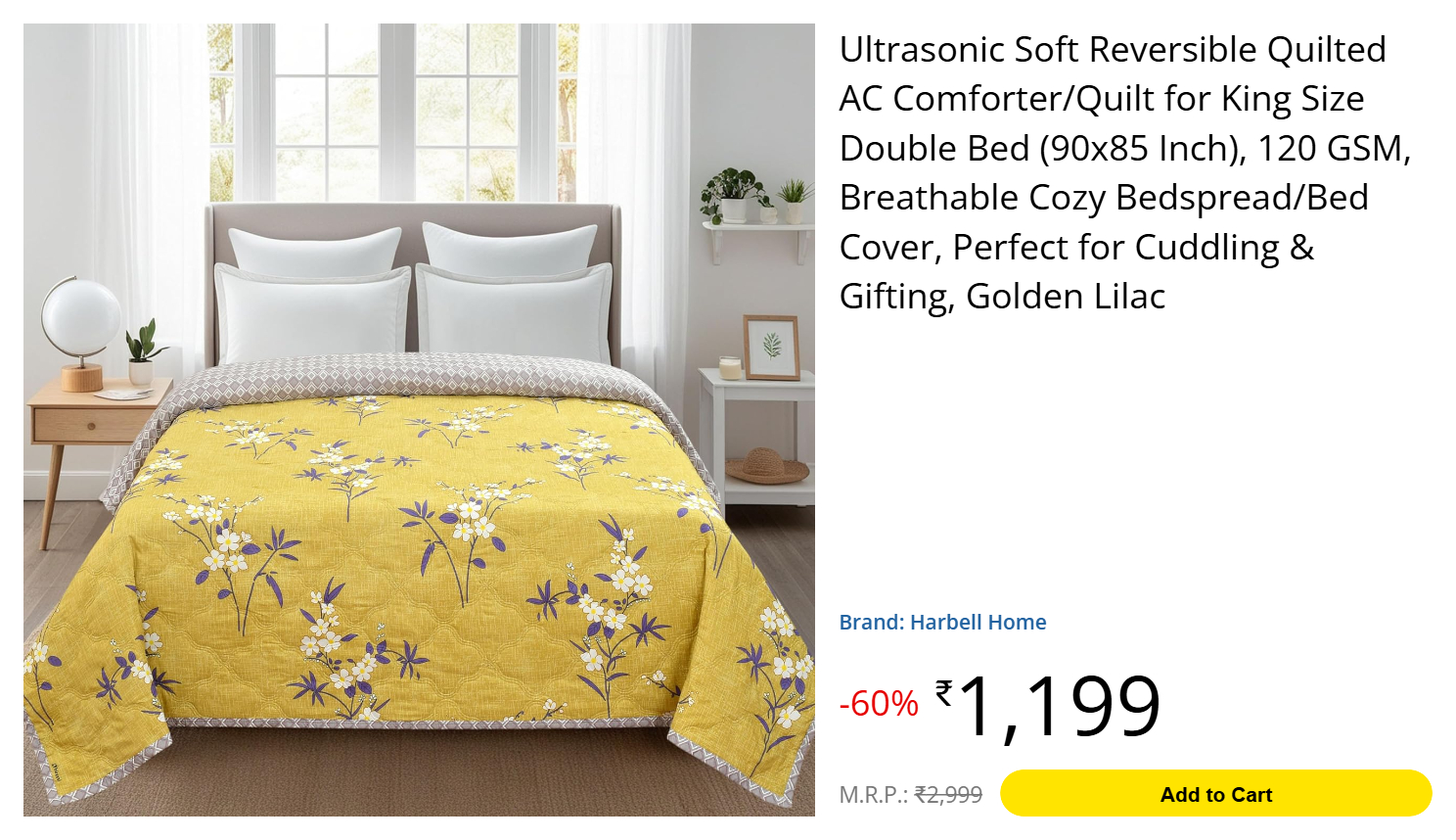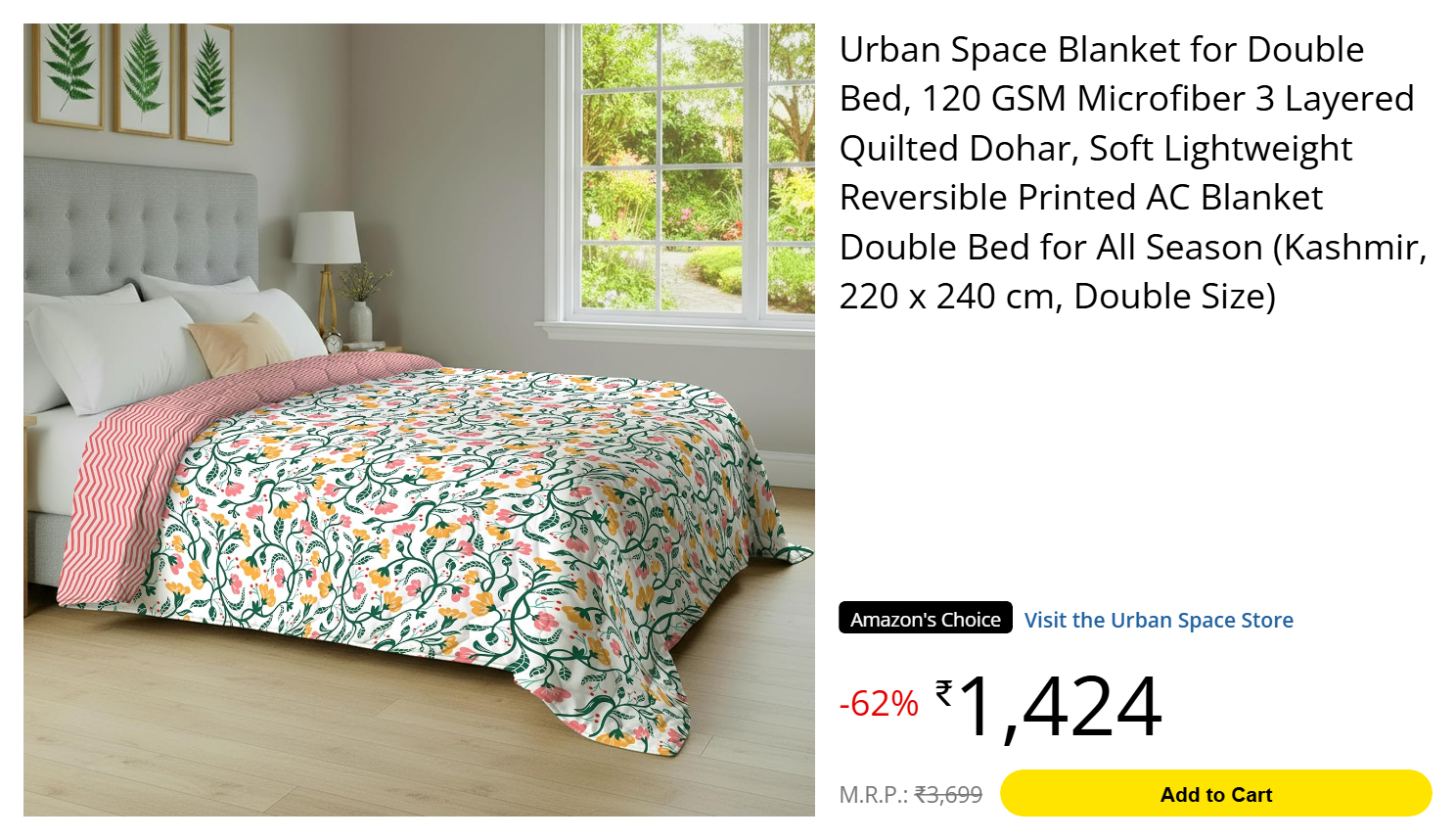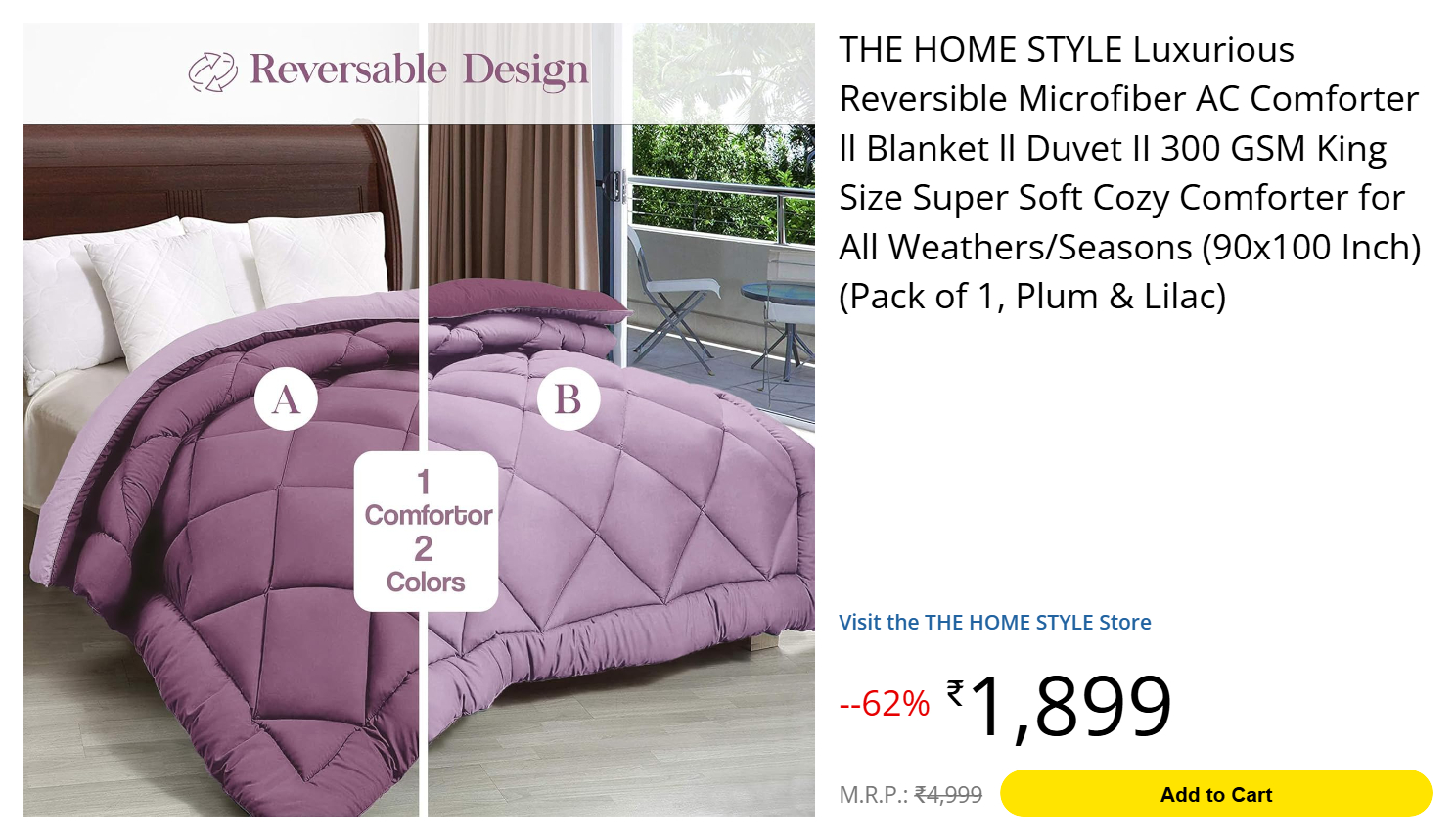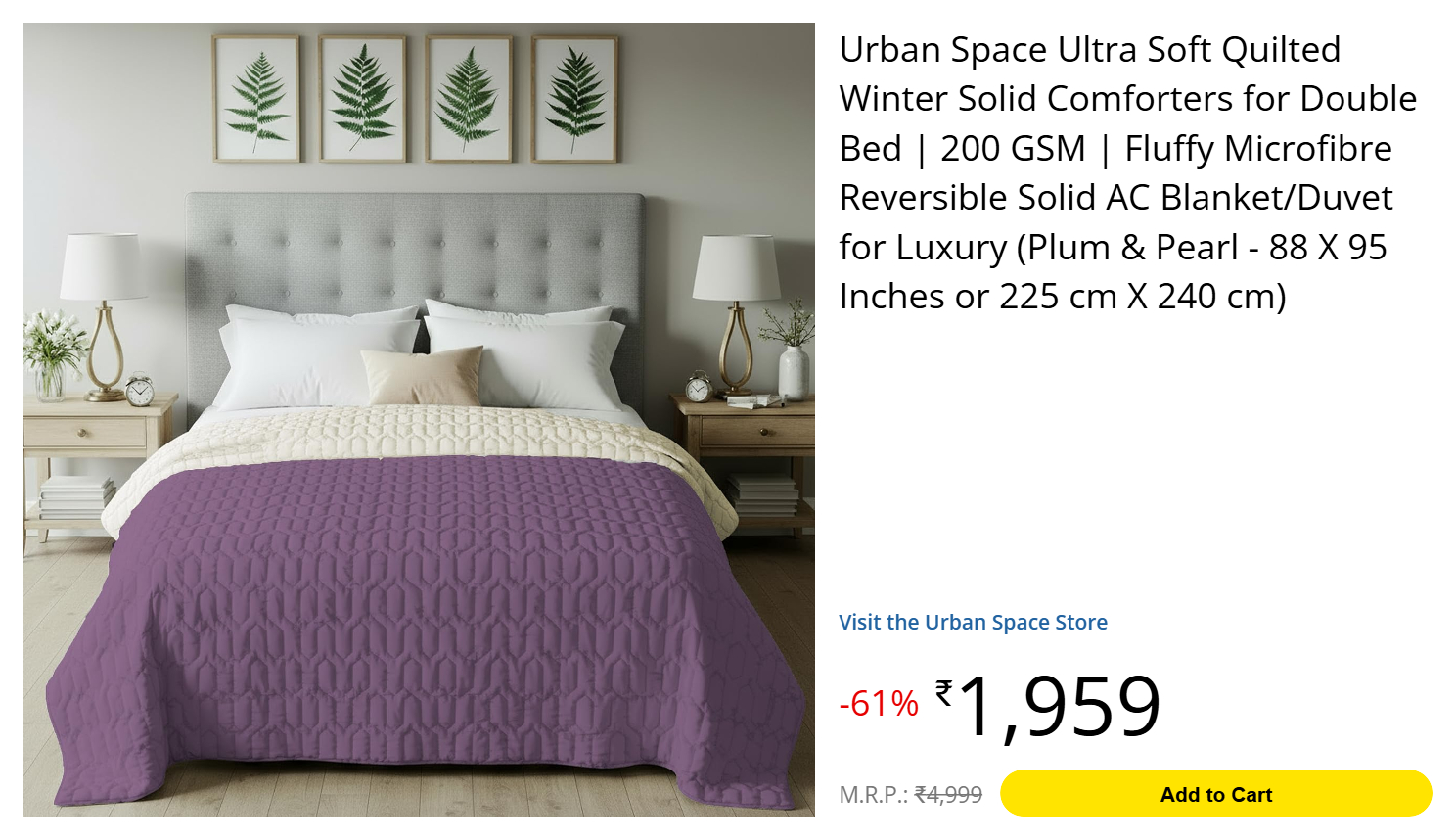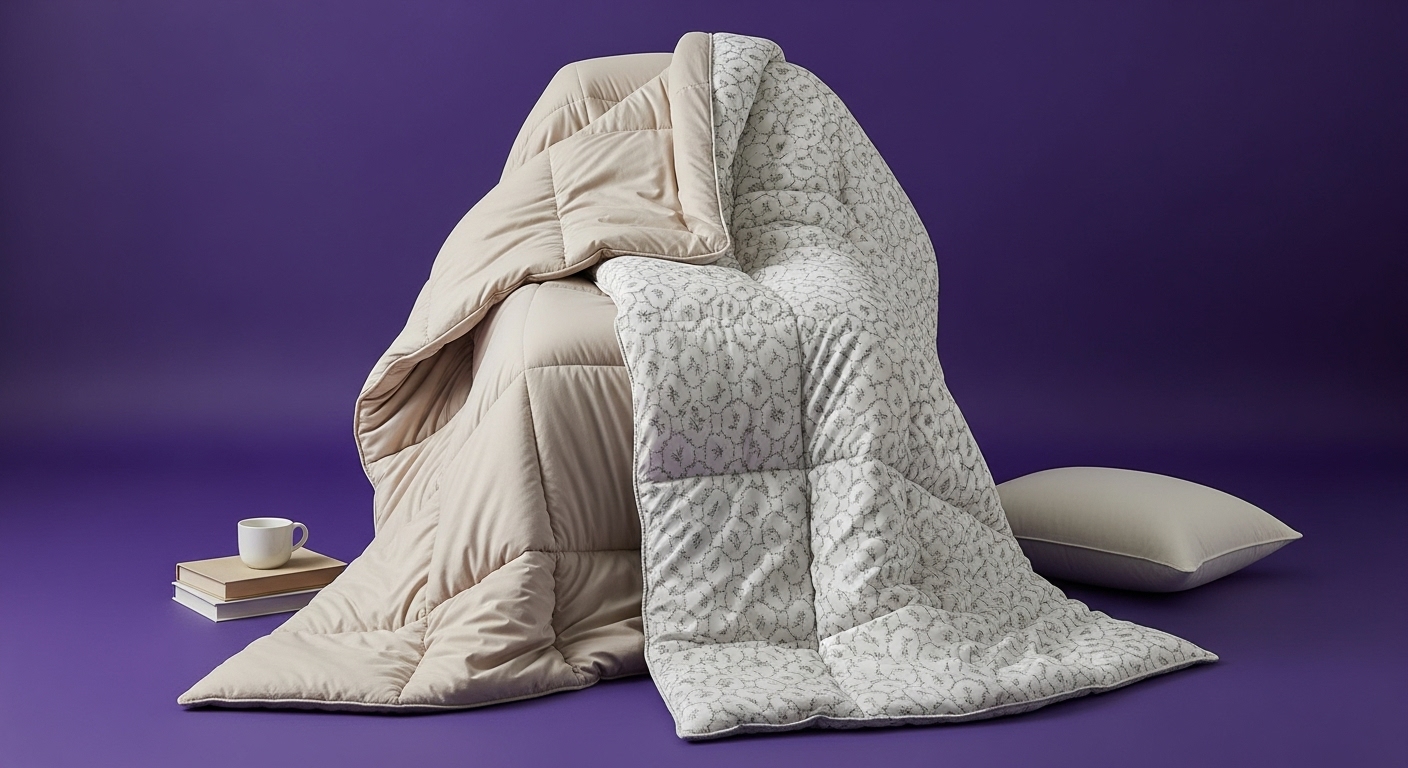
Best Winter Comforters for Cold Nights & Cozy Sleep (2025 Guide)
Cold floors, drafty bedrooms, or nights where even your thick blanket isn’t enough… sound familiar? Winter comforters aren’t just about warmth, they’re about sleep quality, coziness, and comfort tailored to your home’s climate. But with so many materials, weights, and styles, it’s easy to get overwhelmed. This guide breaks it down, from types and materials to smart buying tips, so you can sleep warm, comfortable, and confident.
What is a Winter Comforter?
-
A winter comforter is a thicker, warmer version of your standard bedcover, designed to trap heat during cold months.
-
Fillings vary: natural (down, cotton, wool) or synthetic (microfiber, hollow fiber), affecting warmth, weight, and care.
-
Think of it as a sleep shell, it keeps you cozy without layering multiple blankets that bunch up or slide off.
Types of Winter Comforters
1. Down Comforters
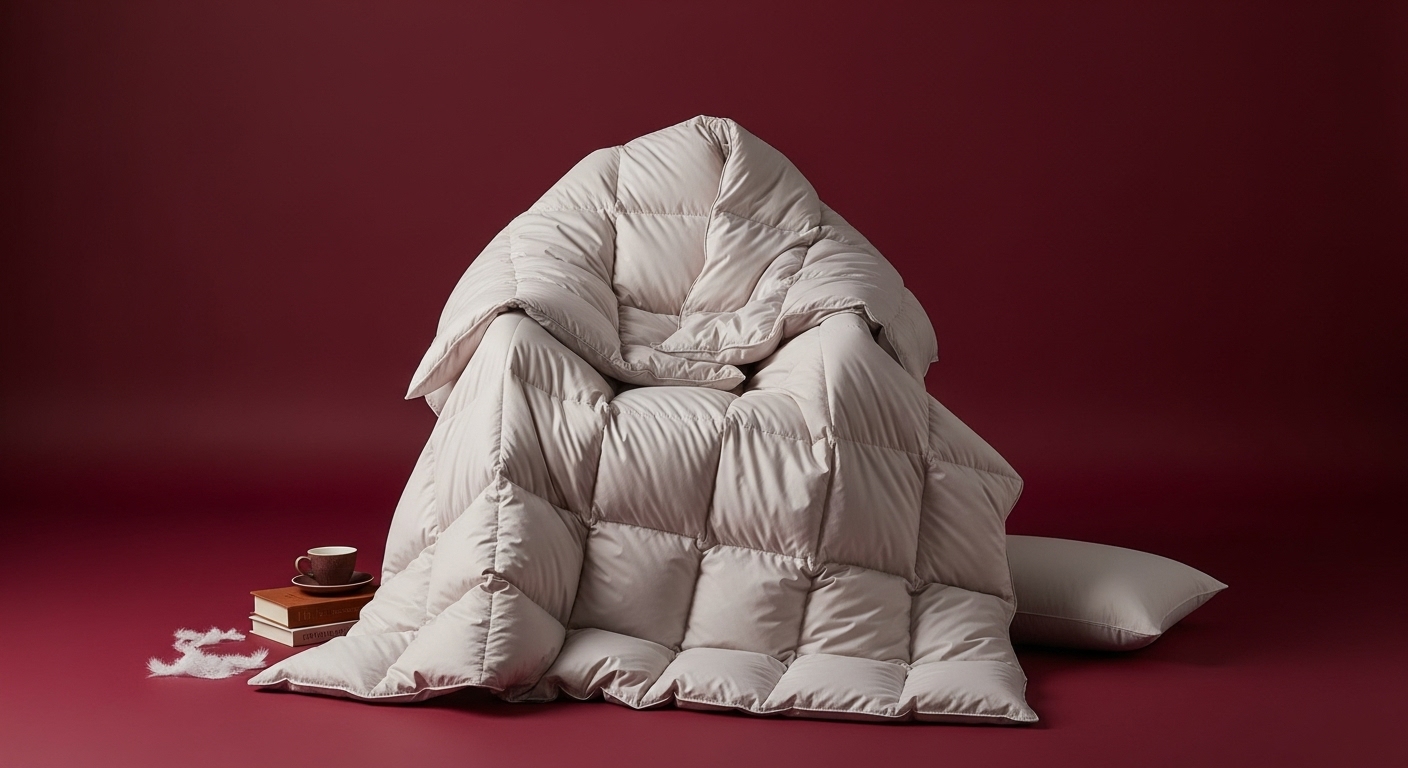
-
Material: Filled with soft duck or goose down clusters. Higher fill power = warmer without adding weight
-
Why it works: Extremely warm without feeling heavy; traps heat efficiently
-
Trade-off: Expensive, requires careful maintenance, can trigger allergie
- Ideal for: Cold, dry winters or anyone craving a plush hotel-style feel
Best Cozy Comforters To Try!
2. Cotton Comforters

-
Material: Made with natural cotton fibers, sometimes blended with polyester for extra loft
-
How it helps: Breathable, soft, machine-washable, and less likely to overheat
-
Considerations: Slightly heavier; warmth depends on weave and layer count
-
Best for: Moderate winters or AC rooms to feel cozy without feeling suffocating
Comforters That Bring Warmth!
3. Microfiber / Synthetic Comforters
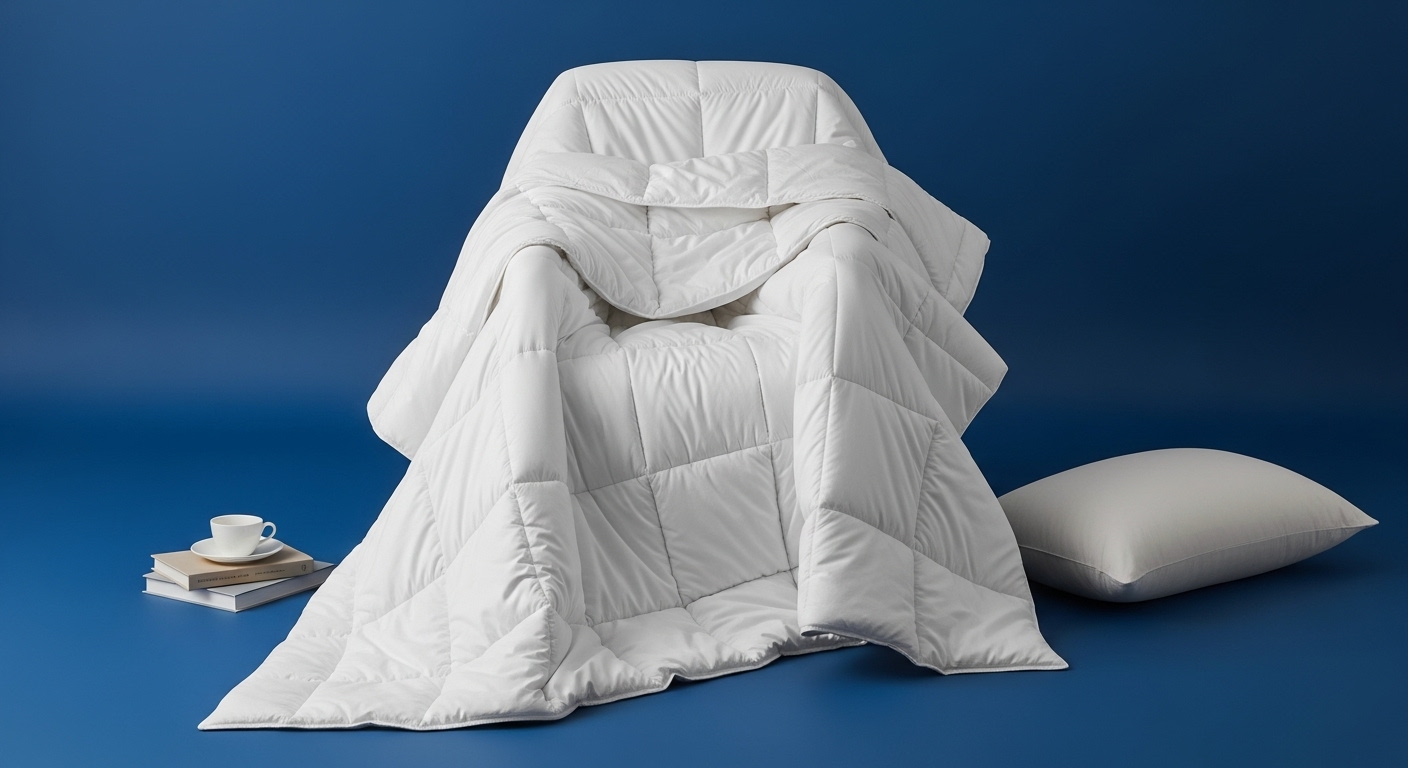
-
Material: Synthetic polyester fibers engineered to mimic down at a fraction of the cost.
-
Problem it solves: Affordable, hypoallergenic, low-maintenance; dries quickly after washing.
-
Things to note: Feels less luxurious; may trap heat in humid rooms.
-
Who’ll live it: Students, guest rooms, or humid winter climates.
Affordable Comforters Just For You!
4. Reversible & Patterned Comforters
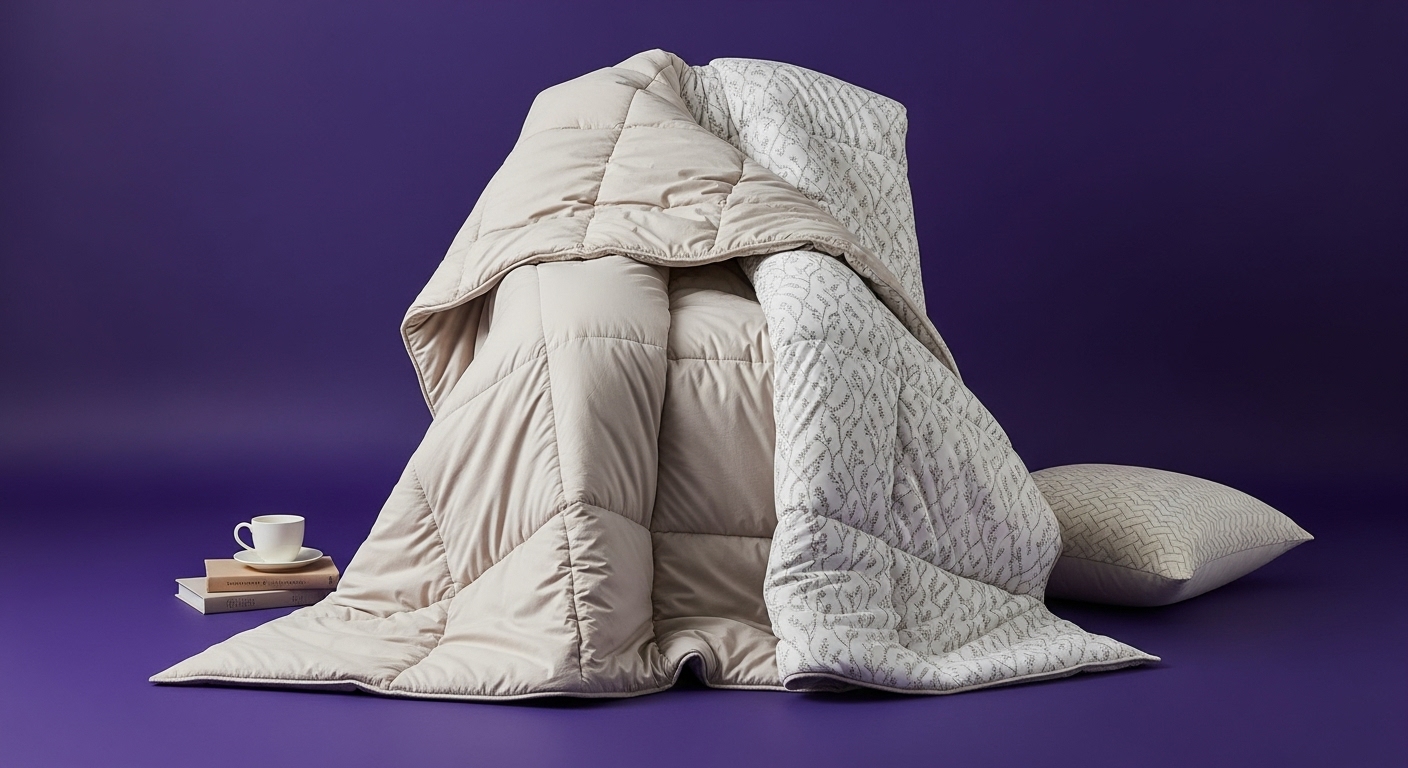
-
Dual-purpose: Flip for two looks or textures
-
Benefit: Adds visual variety while still keeping you warm
-
Trade-off: Often thinner; check fill type to ensure adequate warmth
- Perfect for: Style-conscious homes or layering over another blanket for extra warmth.
Visual Variety For Your Comfort!
Material Comparison at a Glance
|
Material |
Warmth |
Weight |
Care |
Best For |
|
Down |
High |
Light |
Dry clean |
Cold dry winters, luxury feel |
|
Cotton |
Medium |
Medium |
Machine washable |
Moderate winters, breathable |
|
Microfiber |
Medium |
Light |
Machine washable |
Humid winters, easy upkeep |
|
Wool |
High |
Heavy |
Professional clean |
Cold winters, natural warmth |
Choosing the Right Comforter for Your Room
-
Assess your climate: Dry, cold winters favor down; humid winters favor cotton or microfiber
-
Bed size matters: A comforter should drape 6–12 inches on each side for proper coverage
-
Layering style: For very cold nights, combine a thinner comforter with a quilt or throw for flexibility
-
Allergies & maintenance: Natural down may trigger allergies; microfiber is easier to wash and maintain
Quick Tip: Don’t pick the heaviest comforter thinking “more weight = more warmth.” Loft and fill type matter more than bulk.
GSM Quick Reference
GSM (grams per square meter) tells you fill density:
-
300-400 GSM: Moderate winter, AC rooms
-
400-600 GSM: Serious cold, unheated bedrooms
-
600+ GSM: Extreme winter, snowy climates
Remember: A 400 GSM down comforter will be warmer than a 500 GSM cotton one. Check material and GSM together.
Winter Comforter Care Tips
-
Shake and air out regularly to maintain loft.
-
Use a removable cover for easier washing.
-
Store in a breathable bag (not plastic) to avoid moisture.
-
Spot clean spills immediately to prevent stains and odors.
FAQ / Quick Answers
Q: How long does a winter comforter last?
A: 5–10 years, depending on fill quality, frequency of use, and care.
Q: What's the difference between a warm quilt and a winter comforter?
A: Comforter is one thick piece with fill sewn inside. The quilt is thinner, decorative, not warm enough alone for real winter. For cold nights, go to the comforter.
Q: Can I use a winter comforter in AC year-round?
A: You'll get too warm in summer. Better to keep a lightweight one (150-250 GSM) for summer AC, switch to winter when temps drop.
Q: Are eco-friendly comforters worth it?
A: If sustainability matters and you're willing to pay 20-30% more, yes. Look for organic cotton, recycled fills, RDS-certified down. Better for sensitive skin and environment.
Q: Do hotel-style comforters work for winter?
A: Marketing term pointing to: high thread count cotton shells, box-stitch construction, white/neutral colors. Hotels use medium-weight (one size fits most guests). If you're in a serious cold, prioritize function over hotel aesthetics.
Q: What is the best material for a winter comforter?
A: Down: Extreme cold, lightweight, luxury (₹5,000+)
Cotton: Humid winters, breathable, easy wash (₹1,500–5,000)
Microfiber: Budget-friendly, hypoallergenic (under ₹2,000)
Wool: Eco-friendly, snowy climates (₹4,000–8,000)
Q: How do I wash a winter comforter at home?
A: Down: Professional cleaning only.
Cotton/Microfiber: Large machine, gentle cycle, cold water, mild detergent, no fabric softener. Air dry or tumble dry LOW with tennis balls. Wash duvet cover weekly.
Q: Should I get a reversible comforter or a regular one?
A: Get reversible if:
-
Your climate fluctuates (cold mornings, warm afternoons)
-
You like changing bedroom aesthetics seasonally
-
You're in transitional zones of your country
Conclusion / Next Steps:
Winter comforters aren’t just bedding. They’re your nightly investment in comfort and warmth.
Choosing the right one depends on:
-
Your climate and room temperature
-
Bed size and personal preference for weight/fluff
-
Maintenance and budget
#all season comforter#all weather comforter#best brand comforter#best comforter#best warm bedding#best winter quilt#comforter for single bed#comforter online#comforter price#comforter sale#comforter sets#comforter vs duvet#cotton comforter#cozy comforter#double bed comforter#down alternative comforter#down comforter#down feather comforter#duck down comforter#eco friendly comforter#extra warm comforter#fluffy bed comforter#fluffy comforter#goose down comforter#heavy comforter#heavy winter blanket#hotel comforter#hypoallergenic comforter#king size comforter#lightweight comforter for winter#lightweight winter comforter#luxury duvet set#microfiber comforter#premium comforter#printed comforter#queen comforter#quilt comforter set#quilt vs comforter#reversible comforter#sherpa comforter#soft bed comforter#soft comforter#soft cotton comforter#stylish comforter set#synthetic comforter#thermal blanket#thermal comforter#thick comforter#warm bed comforter#warm bedding set#warm quilt for winter#washable comforter#winter bedding#winter bedding ideas#winter blanket#winter comforter#winter comforter blanket#wool comforter
